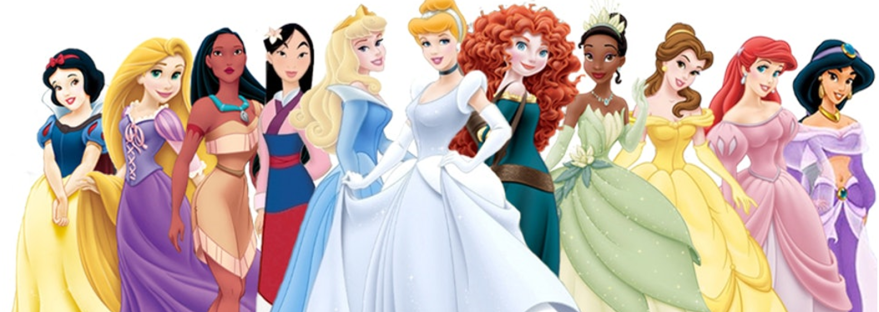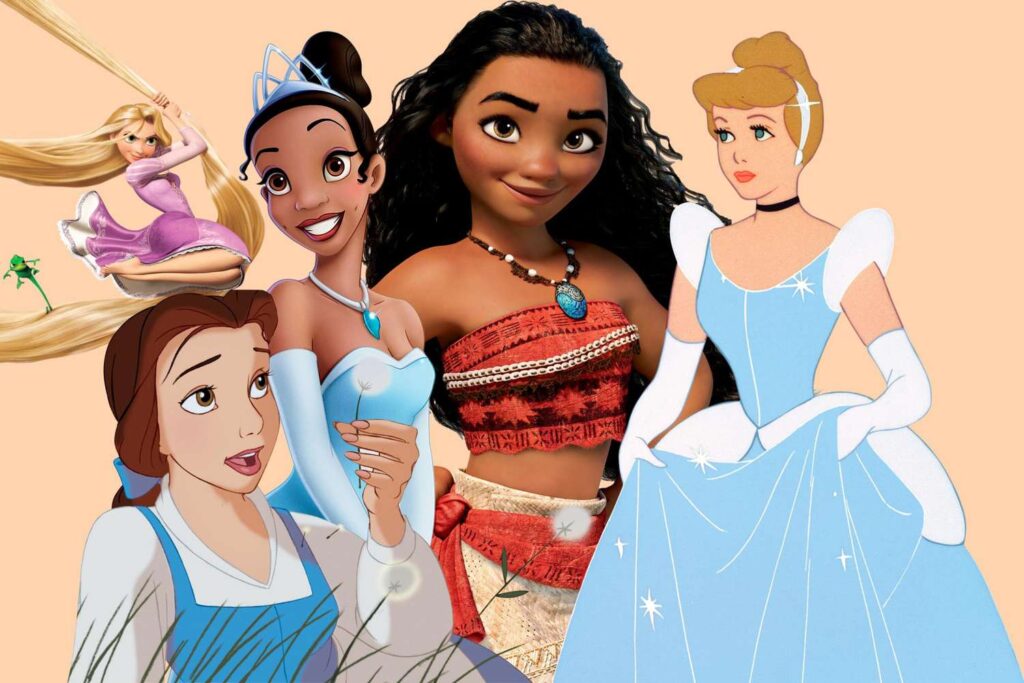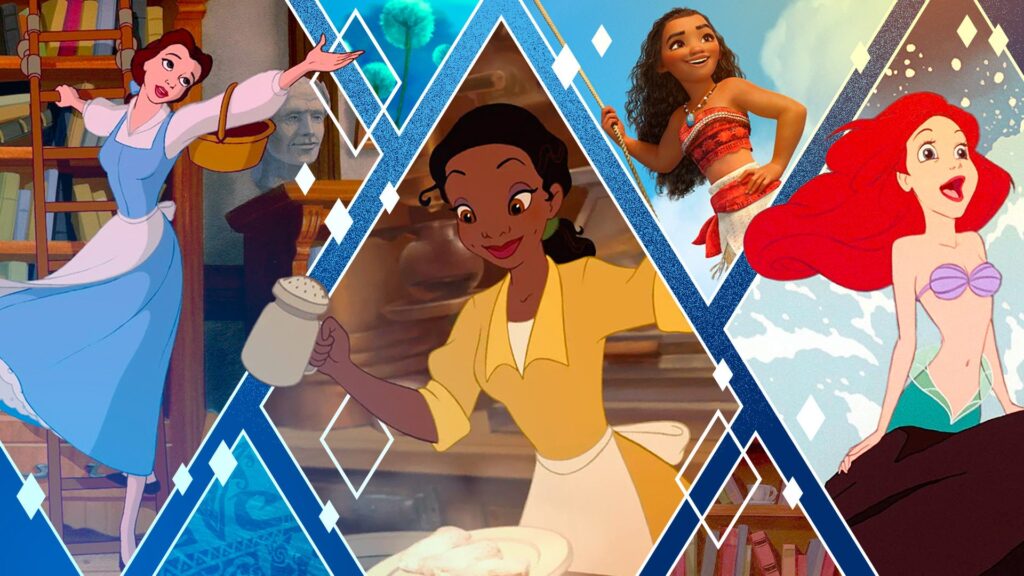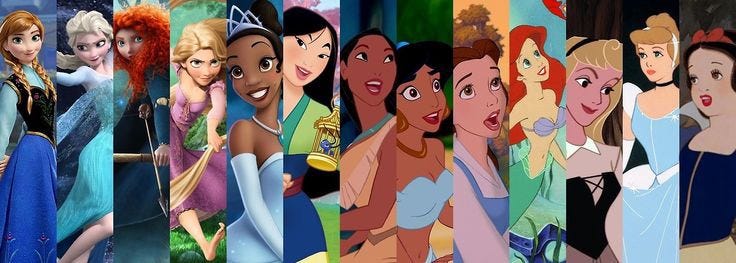Disney princesses have been a cornerstone of animated cinema for decades, captivating audiences with their timeless stories and enchanting characters. From Snow White to Moana, these iconic figures have undergone a remarkable evolution, reflecting changing societal norms and attitudes towards femininity. In this article, we explore the evolution of Disney princesses and their portrayal of femininity, examining how these characters have evolved over time to embrace empowerment, independence, and diversity.
Much like how Disney princesses have evolved to challenge stereotypes and empower women, workout crop tops offer a form of self-expression and confidence for individuals embracing their femininity in today’s society.
Early Depictions of Femininity

In the early days of Disney animation, princesses were often portrayed as passive and demure figures, waiting to be rescued by their prince charming. Characters like Snow White and Cinderella embodied traditional notions of femininity, emphasizing beauty, grace, and domesticity. Their primary goals revolved around finding true love and living happily ever after, reinforcing stereotypical gender roles and expectations.
Despite their passive roles, early Disney princesses did possess certain admirable qualities. Snow White, for instance, displayed kindness and compassion towards all creatures, while Cinderella demonstrated resilience and optimism in the face of adversity. However, these traits were often overshadowed by their submissive demeanor and dependence on male characters for salvation. Just as each princess represents a unique archetype, the extra strength chocolate cones edibles variety pack offers a range of flavors and experiences.
However, it’s important to recognize the context of the time in which these early princess films were created. They emerged during an era when societal expectations for women were vastly different from today. Women’s roles were often confined to the domestic sphere, and notions of femininity were heavily influenced by patriarchal norms and values. As such, the portrayal of princesses as passive and submissive figures reflected the prevailing attitudes towards women’s roles and aspirations.
The Renaissance Era: Redefining Femininity
The Disney Renaissance of the late 20th century brought about a significant shift in the portrayal of princesses and femininity. With films like “The Little Mermaid,” “Beauty and the Beast,” and “Mulan,” Disney introduced a new generation of princesses who defied traditional stereotypes and embraced agency and autonomy.
If you are a big fan of Disney, there are many themed environments where you can immerse yourself in the magical worlds of your favorite characters.
A notable example is Ariel from “The Little Mermaid,” who dreams of exploring the human world and pursuing her own desires, rather than conforming to her father’s expectations. Similarly, Belle from “Beauty and the Beast” rejects the advances of the arrogant Gaston and seeks adventure and intellectual stimulation beyond the confines of her provincial life.
These Renaissance-era princesses challenged the notion that women should be passive recipients of their fate, instead advocating for the importance of individual agency and self-determination. They were characterized by their courage, intelligence, and willingness to defy societal expectations in pursuit of their dreams. Through their actions and choices, these princesses inspired audiences to reconsider traditional notions of femininity and embrace a more empowered and independent vision of womanhood.
Just as Disney princesses have evolved to reflect changing societal norms and values, legal document signing has adapted to technological advancements, allowing for remote signings and streamlined workflows.
Modern Princesses: Empowerment and Diversity
In recent years, Disney has continued to expand its roster of princesses, introducing characters from diverse backgrounds and cultures who challenge conventional notions of femininity. Princesses like Mulan, Pocahontas, and Tiana are portrayed as strong, independent women who defy societal expectations and chart their own destinies.
Mulan, for instance, disguises herself as a man to join the Chinese army and protect her family, showcasing bravery, resourcefulness, and determination. Similarly, Tiana from “The Princess and the Frog” is a hardworking aspiring chef who refuses to let adversity stand in the way of her dreams, embodying the values of perseverance and ambition.
These modern princesses represent a departure from the passive, romanticized portrayals of femininity seen in earlier Disney films. Instead, they embody a more nuanced and dynamic vision of womanhood, one that celebrates diversity, resilience, and the pursuit of individual aspirations. By showcasing a diverse array of female protagonists from different cultural backgrounds and life experiences, Disney has played a pivotal role in promoting greater representation and inclusivity in animated cinema.
Just as airport transportation in Seattle adapts to meet travelers’ needs, Disney Princesses adapt to reflect the evolving understanding of femininity in society, from traditional roles to more empowered and independent portrayals.
Exploring Cultural Influences

Disney princesses embody a rich tapestry of cultural influences, drawing inspiration from diverse traditions and folklore from around the world. Through meticulous research and collaboration with cultural advisors, Disney animators strive to authentically capture the essence of each princess’s cultural heritage. From the lush landscapes of Scotland in “Brave” to the vibrant rhythms of New Orleans in “The Princess and the Frog,” the settings and visual aesthetics of Disney films transport audiences to far-off lands and immerse them in unfamiliar cultures.
Engaging in a kambo session in Austin TX, can be seen as a transformative journey, similar to the growth and empowerment experienced by Disney princesses as they navigate their narratives of self-discovery.
Moreover, Disney’s commitment to cultural authenticity extends beyond mere aesthetics, encompassing themes, values, and storytelling conventions unique to each culture. For example, “Mulan” incorporates elements of Chinese martial arts and Confucian philosophy, emphasizing concepts of honor, duty, and filial piety. Similarly, “Moana” draws from Polynesian mythology and navigation techniques, showcasing the importance of community, stewardship, and interconnectedness with nature.
By celebrating diverse cultural perspectives, Disney not only enriches its storytelling but also fosters cross-cultural understanding and appreciation among its global audience. Through the adventures of its princesses, Disney invites viewers to explore new worlds, encounter unfamiliar customs, and gain insight into the universal human experiences that transcend cultural boundaries.
Just as dog grooming in Seattle prioritizes the well-being and happiness of furry companions, Disney Princesses embody compassionate and nurturing qualities toward animals in their animated adventures.
Breaking Gender Stereotypes
In addition to defying traditional gender stereotypes, Disney princesses actively challenge societal expectations regarding gender roles and behavior. Characters like Mulan and Merida exemplify traits typically associated with masculinity, such as physical strength, courage, and assertiveness, while still embodying qualities of femininity such as empathy, compassion, and resilience.
Moreover, Disney princesses are increasingly depicted as multidimensional and complex individuals with a range of interests, aspirations, and flaws. For example, Rapunzel from “Tangled” is not defined solely by her desire for romance but also by her curiosity, creativity, and sense of adventure. Similarly, Moana’s journey is driven not by a quest for love but by a deep sense of duty, determination, and connection to her cultural heritage.
Through orthopedic physical therapy, individuals can enhance their mobility and strength, paralleling the empowerment of Disney Princesses as they navigate challenges and assert their agency.
Through the nuanced portrayal of its princess characters, Disney challenges the notion that femininity is synonymous with passivity, fragility, or dependence on male validation. Instead, Disney celebrates the diverse expressions of femininity and encourages audiences to embrace their unique strengths, passions, and identities, regardless of gender norms or societal expectations.
Incorporating Environmental Themes
Disney’s incorporation of environmental themes reflects a growing awareness of the urgent need to address global environmental challenges such as climate change, habitat destruction, and biodiversity loss. By weaving these themes into its princess narratives, Disney not only educates audiences about environmental issues but also inspires them to take action and make a positive impact on the world around them.
In films like “Pocahontas” and “Moana,” the natural world is depicted as a character in its own right, with its own needs, desires, and agency. Pocahontas’s deep reverence for the earth and her efforts to protect her homeland from destruction resonate with contemporary environmental movements, emphasizing the interconnectedness of all living beings and the importance of living in harmony with nature.
Just as junk removal in Emerald Coast ensures clutter-free spaces, the transformation of Disney princess characters ensures a refreshing portrayal of femininity in animated cinema.
Moreover, Disney’s portrayal of environmental themes goes beyond mere conservationism, addressing complex issues such as cultural heritage, colonialism, and indigenous rights. Films like “Avatar” and “Raya and the Last Dragon” explore the devastating consequences of environmental exploitation and the importance of respecting indigenous knowledge and traditions in environmental stewardship.
Through its princess narratives, Disney encourages audiences to reevaluate their relationship with the natural world and consider the ethical implications of their actions on future generations. By inspiring empathy, compassion, and a sense of responsibility towards the planet, Disney empowers viewers to become agents of positive change in their communities and beyond.
Celebrating Sisterhood and Friendship
The emphasis on sisterhood and friendship in Disney princess narratives reflects a broader cultural shift towards recognizing the importance of platonic relationships in shaping personal identity and emotional well-being. By showcasing the bonds of sisterhood and friendship as sources of strength, support, and growth, Disney challenges the narrative that romantic love is the ultimate goal or measure of success for women. The owner of the most professional interior design studio in Lighthouse Point FL used to love watching animated Disney princesses in their journeys when she was a child.
In films like “Frozen” and “The Princess and the Frog,” the relationships between female characters are central to the plot, driving the narrative forward and providing emotional depth and resonance. Anna and Elsa’s journey towards reconciliation and acceptance in “Frozen” highlights the transformative power of unconditional love and forgiveness, while Tiana and Charlotte’s unwavering friendship in “The Princess and the Frog” underscores the importance of mutual respect, loyalty, and shared dreams.
Moreover, Disney’s portrayal of sisterhood and friendship transcends conventional gender norms and expectations, depicting relationships between women as diverse, complex, and meaningful. Whether it’s the playful banter between Rapunzel and her chameleon sidekick Pascal or the fierce loyalty between Moana and her grandmother Tala, Disney celebrates the myriad ways in which female characters support, inspire, and empower each other.
Outdoor living space design in Green Bay offers a chance to infuse elements of fantasy and imagination into your everyday life. Similar to the magical journeys experienced by Disney Princesses, your outdoor space can transport you to a realm of relaxation and enjoyment.
Through its exploration of sisterhood and friendship, Disney encourages audiences to cultivate meaningful connections with others and recognize the value of supportive relationships in navigating life’s challenges and triumphs. By celebrating the bonds of sisterhood and friendship, Disney fosters a sense of solidarity, empathy, and belonging among its viewers, inspiring them to cherish and nurture their own relationships with loved ones.
Addressing Mental Health

The depiction of mental health issues in Disney princess narratives reflects a growing recognition of the importance of destigmatizing mental illness and promoting mental well-being. By portraying characters who grapple with feelings of anxiety, depression, and self-doubt, Disney not only raises awareness about the prevalence and impact of mental health issues but also fosters empathy, understanding, and support for those who may be struggling.
In films like “Tangled” and “Moana,” Disney explores the psychological toll of trauma, isolation, and self-imposed limitations on individual mental health. Rapunzel’s journey toward self-discovery and healing in “Tangled” resonates with audiences who may be navigating similar struggles, highlighting the transformative power of self-acceptance and self-care. Similarly, Moana’s quest for identity and purpose in “Moana” reflects the universal experience of searching for meaning and belonging in the face of uncertainty and adversity. Disney princesses inspire audiences to embrace their individuality and inner strength, much like the personalized care offered at a skin care clinic in Markham, where individuals can enhance their natural beauty and confidence.
Moreover, Disney’s portrayal of mental health issues goes beyond mere representation, offering nuanced and compassionate depictions of characters’ experiences and emotions. Whether it’s Elsa’s struggle to control her powers in “Frozen” or Moana’s feelings of inadequacy and self-doubt, Disney portrays mental health issues with sensitivity, authenticity, and complexity, encouraging viewers to destigmatize conversations about mental illness and seek help when needed.
Through its exploration of mental health themes, Disney empowers audiences to recognize the importance of prioritizing their emotional well-being and seeking support from friends, family, and mental health professionals. By depicting characters who confront and overcome mental health challenges, Disney inspires hope, resilience, and a sense of solidarity among viewers, reminding them that they are not alone in their struggles.
Conclusion: Shaping the Future of Animation
In conclusion, the evolution of Disney princesses reflects not only changes in societal attitudes toward femininity but also broader shifts in storytelling, cultural representation, and social consciousness. From challenging gender stereotypes to addressing environmental and mental health issues, Disney princesses continue to evolve and adapt to the changing landscape of animated cinema. As Disney continues to push the boundaries of storytelling and representation, one thing remains clear: the legacy of these iconic characters will continue to inspire and resonate with audiences of all ages for generations to come.

